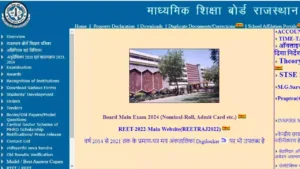Ready to breathe new life into your computer or dive into the Windows 10 experience for the first time? Installing Windows 10 might seem daunting, but with the right steps and a little preparation, you’ll be up and running in no time. This guide will walk you through the entire process, from gathering your resources to customizing your new setup. Whether you’re a seasoned techie or a complete novice, let’s conquer your PC together!
1. Gearing Up for Installation: Essentials and Options
Before embarking on your Windows 10 installation journey, it’s crucial to gather the necessary tools and choose the installation method that suits your needs. Here’s what you’ll require:
- A valid Windows 10 product key: This 25-character code activates your operating system and unlocks its full functionality. You can purchase a key online or obtain it from pre-installed Windows devices.
- Internet connection: Downloading installation media and updates requires a stable internet connection.
- Bootable USB drive or DVD (optional): If you don’t have an optical drive or prefer a faster option, a USB drive with at least 8GB of free space is recommended.
- Backup of your important data: Installing Windows 10 will erase all data on your primary drive. Back up essential files and documents to an external drive or cloud storage.
Now, let’s explore your installation options:
- Upgrade from Windows 7 or 8.1: If you already have Windows 7 or 8.1, Microsoft offers a free upgrade path to Windows 10 through their official website. This preserves your files and settings, making it a seamless transition.
- Clean installation: Want a fresh start? Opt for a clean installation, which wipes your entire drive and installs Windows 10 from scratch. This method ensures a bug-free system but requires a complete data backup.
2. Downloading the Installation Media and Booting Up: Windows 10
With your preparations complete, it’s time to create your installation media. You have two options:
- Media Creation Tool: Head to Microsoft’s official website and download the Media Creation Tool. This user-friendly software lets you create a bootable USB drive or DVD containing the latest Windows 10 installation files. Simply follow the on-screen instructions, selecting your desired edition and language.
- Download an ISO file: For advanced users, Microsoft offers Windows ISO files directly. Download the appropriate file, use software like Rufus to create a bootable USB drive, and you’re ready to proceed.
Once your installation media is prepared, connect it to your computer and restart. Enter your BIOS/UEFI settings (usually by pressing a specific key during startup) and change the boot order to prioritize your USB drive or DVD drive. This will boot your computer from the installation media, initiating the Windows 10 setup process.
3. Navigating the Setup Process: Windows 10
The Windows 10 setup process is straightforward, guiding you through essential steps like selecting your language, time zone, and keyboard layout. Here are some key points to remember:
- Product key: Enter your valid product key when prompted. If you’re upgrading from a previous Windows version, the key might be automatically retrieved.
- License terms: Carefully review and accept the license terms before proceeding.
- Installation type: Choose between “Upgrade” (preserving your data and settings) or “Custom” (clean installation with data wiped).
- Drive selection: Select the drive where you want to install Windows. Remember, a clean installation requires formatting the drive, erasing all data.
- User accounts and personalization: Create your local user account and personalize your settings like background and color theme.
4. Finishing Touches and Post-Installation Setup
After following the on-screen instructions, your Windows installation will be complete. The system will restart and begin initial setup, installing essential drivers and updates. Once at the desktop, here’s what to do next:
- Connect to the internet: If you haven’t already, connect to the internet to download and install the latest updates for Windows 10, ensuring optimal performance and security.
- Install essential drivers: Visit your computer manufacturer’s website and download any missing drivers specific to your hardware. These drivers ensure proper functionality of your components.
- Install your preferred software: Download and install your favorite applications, drivers, and antivirus software to personalize your Windows 10 experience.
Congratulations! You’ve successfully installed Windows on your computer. By following these steps and customizing your setup, you’re now ready to explore the vast potential of this powerful operating system. Remember, Windows offers














